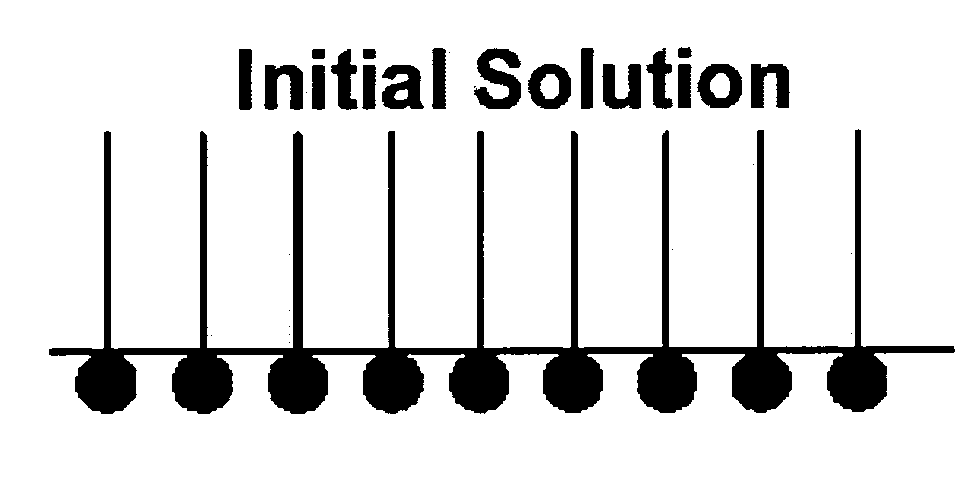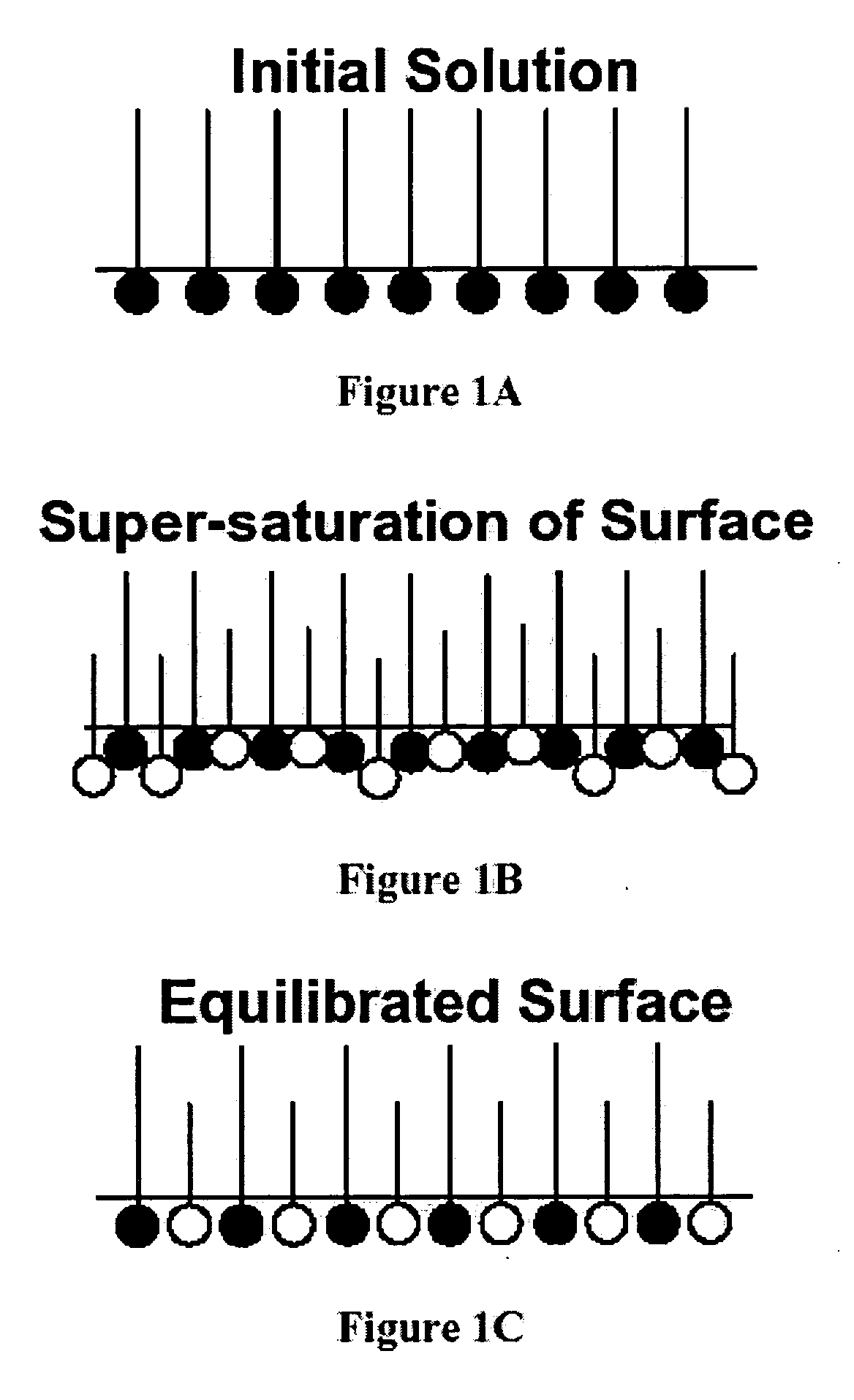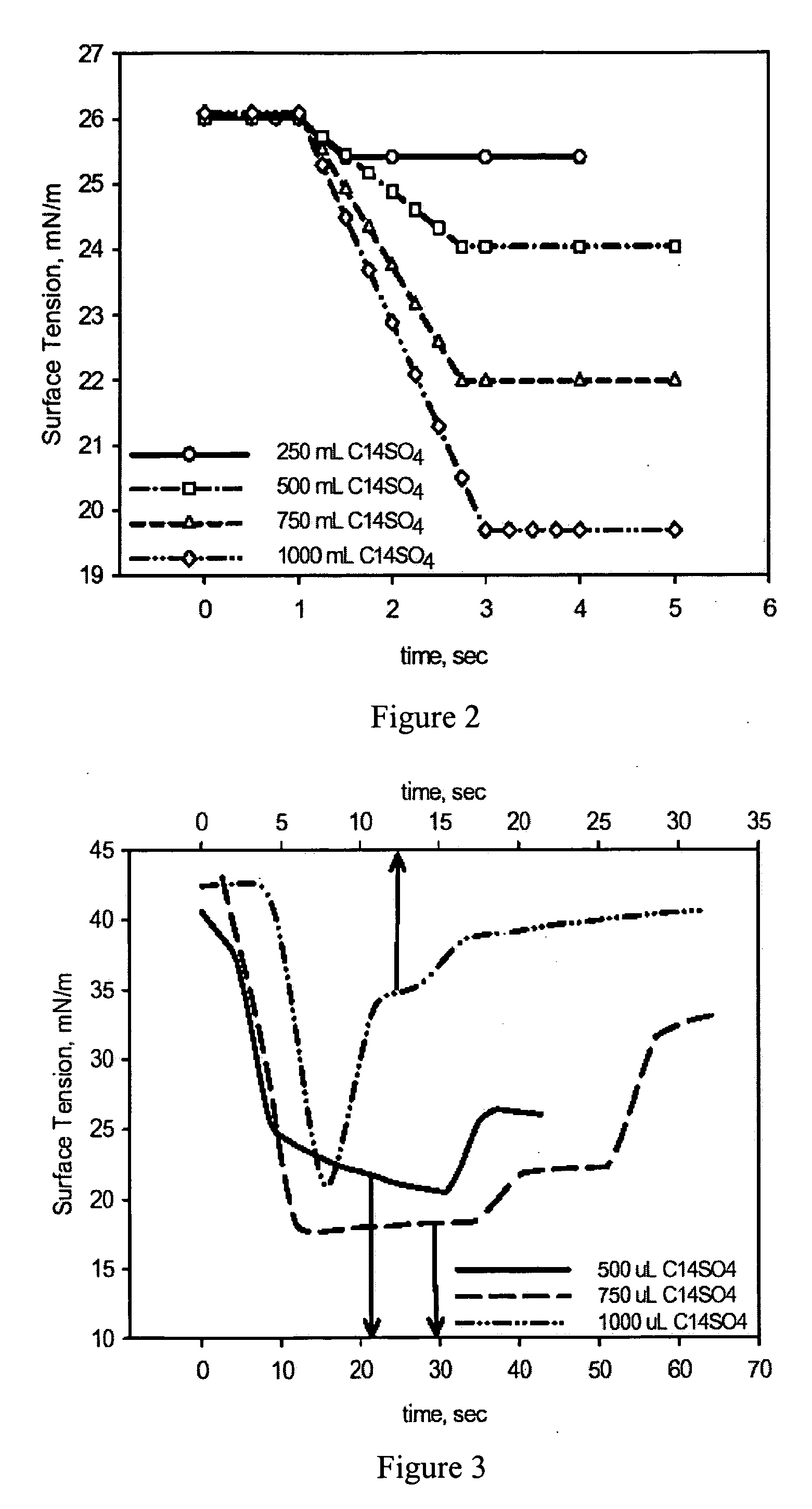Process for enhanced liquid extraction from fabrics
a technology of liquid extraction and fabric, applied in the direction of liquid/gas/vapor removal, cleaning using liquids, detergent compounding agents, etc., can solve the problems of not achieving the ideal reduction of drying time and energy desired by consumers, other undesired fabric properties, and reduced drying time and energy, so as to reduce surface tension and reduce surface tension value, the effect of substantial chain length compatibility
- Summary
- Abstract
- Description
- Claims
- Application Information
AI Technical Summary
Benefits of technology
Problems solved by technology
Method used
Image
Examples
example 1
[0078] In this experiment, sodium tetradecyl sulfate (C14SO4) co-surfactant is used together with a solution of hexadecyl trimethyl ammonium bromide (C16TAB). A solution of 3.68 mM hexadecyl trimethyl ammonium bromide (C16TAB) was prepared. Using 10 mL of the C16TAB solution, different amounts (250 μL, 500 μL, 750 μL and 1000 μL) of 4 mM C14SO4 were injected beneath the air-liquid interface of the C16TAB solution and the surface tension is measured (approximately 40 times per seconds) as a function of time as set forth in FIG. 2. The lowest surface tension achieved is ˜20 mN / m. While not limited by a theory, it is believed that since the C16TAB is in bulk solution and does not form a surface layer, and any C14SO4 injected into the system immediately interacts with the bulk surfactant instead of partitioning the air-liquid interface.
example 2
[0079] In this experiment, a C16TAB surface layer was created on distilled water and increasing amounts of C14SO4 are injected beneath the surface layer and the surface tension is measured (approximately 40 times per second) as a function of time. The surface layer was created by first solubilizing 0.1 wt % of C16TAB in a mixture of 3:1:1 volume ratio of hexane to chloroform to methanol. Five μL of the resulting solution was placed on the surface of 5 mL of distilled water. The solvent (hexane, chloroform and methanol) was allowed to evaporate, thus leaving a C16TAB monolayer. Increasing amounts (250 μL, 500 μL, 750 μL and 1000 μL) of 4 mM C14SO4 were then injected beneath the monolayer and the surface tension is measured as a function of time as set forth in FIG. 3. A transient low surface tension of 17.5 mN / m was achieved for about 20 seconds using 750 L of 4 mM C14SO4.
[0080] While not limited by a theory, it is believed that once the C14SO4 is injected into the solution, supersa...
example 3
[0082] In this experiment, mixed surfactant surface layers are demonstrated and the packing due to electrostatic interactions between the headgroups of the surfactants is observed. A tetradecyl sodium sulfate (C14SO4) with dioctyldecyldimethylammonium bromide (DODAB) was employed. Molecular ratios of 1:10, 1:5, 1:3, and 1:2 of the C14SO4:DODAB monolayers were investigated. The procedures for preparing the surface layers are similar to those described in Example 2.
[0083]FIG. 9 sets forth the results for the 1:10 molecular ratio of C14SO4:DODAB surface layer injected with C14SO4. As shown, the 1:10 molecular ratio of C14SO4:DODAB surface layer system results in a surface tension as low as 19 mN / m. FIG. 10 sets forth the results for the 1:5 molecular ratio of C14SO4:DODAB surface layer injected with C14SO4. As shown, in the 1:5 molecular ratio of C14SO4:DODAB surface layer, the surface tension drops to approximately 8.5 mN / m with 1000 L of C14SO4 injected beneath the surface layer.
[0...
PUM
| Property | Measurement | Unit |
|---|---|---|
| surface tension | aaaaa | aaaaa |
| surface tension | aaaaa | aaaaa |
| surface tension | aaaaa | aaaaa |
Abstract
Description
Claims
Application Information
 Login to View More
Login to View More - R&D
- Intellectual Property
- Life Sciences
- Materials
- Tech Scout
- Unparalleled Data Quality
- Higher Quality Content
- 60% Fewer Hallucinations
Browse by: Latest US Patents, China's latest patents, Technical Efficacy Thesaurus, Application Domain, Technology Topic, Popular Technical Reports.
© 2025 PatSnap. All rights reserved.Legal|Privacy policy|Modern Slavery Act Transparency Statement|Sitemap|About US| Contact US: help@patsnap.com



